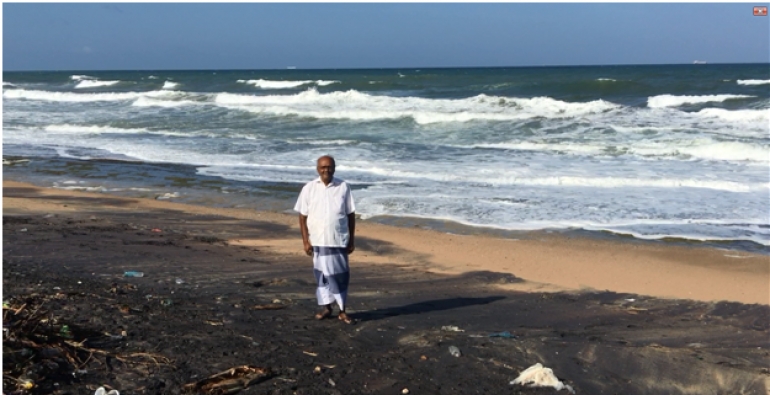P. Anthonis Nonis, an 82 year old retired fisherman, on the beaches nearKapungoda where the Nanguran anchoring harbour is situated, stated that after they built this harbour, there has been a lot of erosion.
Looking at this beach , you can see that the extent of beach is not very far from the land. It extends right up to Dungahapitiya.
As the years go by, it is difficult to say what can happen. In the earlier days "Theppan" boats could have navigated these waters from Kapungoda , Punchi wella , Maha wella , Raja wella right upto Dungahapitiya. But after the Nanguran anchorage harbour was built fishermen are faced with many obstacles to their profession due to the protrusion of rocks in the sea. Today only a few fishermen come to the Anchorage harbour and go out to sea.
The sand which is brought in by the Kelani river is deposited along the beach and from here towards Pamunugama and Bopitiya, sand dunes have formed on the beach. However from the anchorage harbour to Dungahapitiya the beach has blackened and even some of the houses have been affected. Even the coconut trees have been affected and none are to be seen today. All have been lost to the sea .
He pointed to a house bordering the beach where the wall that had once stood has now been washed away.
Further up the beach, one can see how far the sea has come inland. Previously it was all a clean and white beach but now rocks are visible and the waves come onto a blackened beach.
From the month of October , the sand brought in from the Kelani river is washed away upto Dungahapitiya. If not for the Nanguran anchorage harbour that sand is washed back
to this area by the end of October, reclaiming the beach. But white beaches can no longer be expected with the coastline is being eroded and he says he doesn't know what the future holds for the generations to come.



